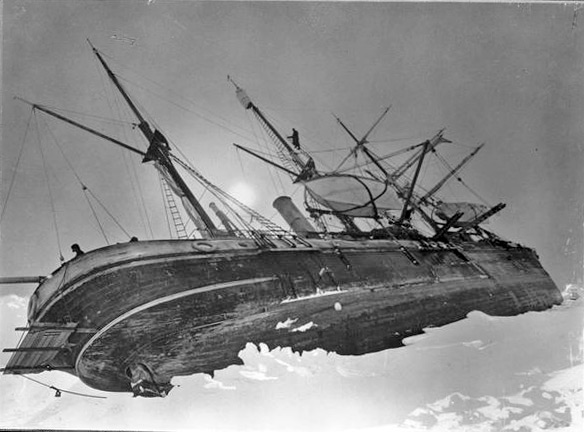
Allow me to set the scene.
Location: The frigid and stormy Wendell Sea, close to the Antarctic continent.
The year: 1915
Sir Ernest Shackleton and his crew are reaching their 400th day living in a makeshift camp on the ice while their now-abandoned ship Endurance is slowly crushed by sea ice. The crew described the groaning and creaking of the splintering ship as sounding like the death cries of something half-alive. By November of that year, the last of the ship finally sank beneath the waves, and Shackleton and his crew had no choice but attempt the harrowing journey in their recovered life boats to the barren, inhospitable shores of Elephant Island. At times, the ice pack was so thick that the men were required to pull the boats onto the ice and drag them several miles to patches of open water.
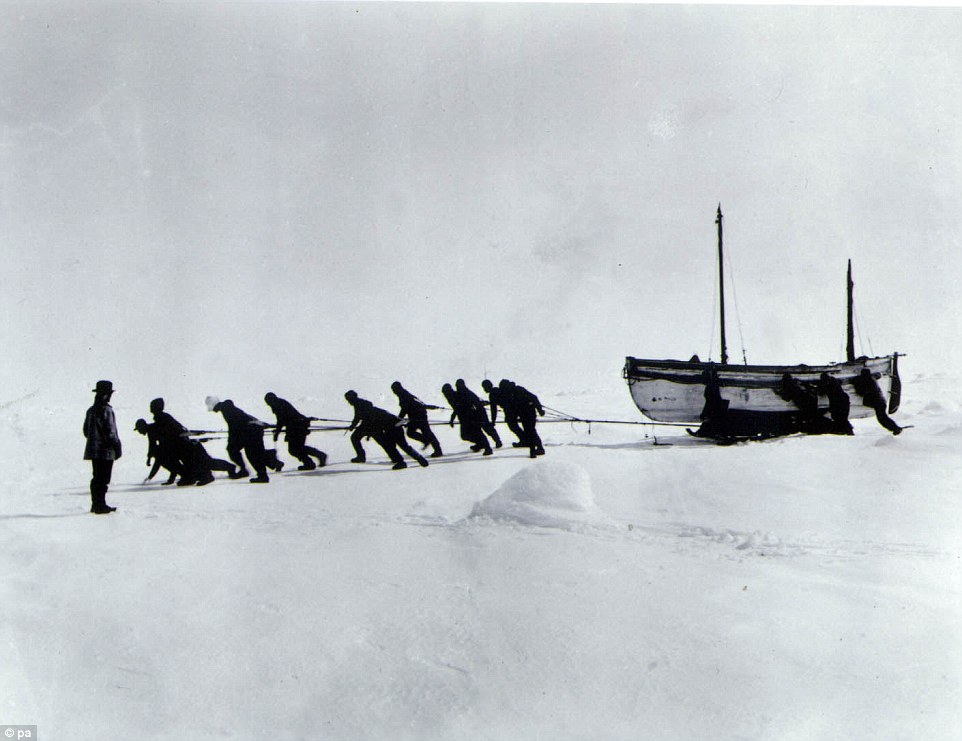
The crew was exhausted, starving and almost continuously dosed with freezing seawater when eventually they sighted the windswept shore of Elephant Island. With their provisions running low and no chance of rescue on the desolate island, Shackleton now faced another grueling decision.
He chose five strong men, including the ship’s navigator, to accompany him in a small open lifeboat for an impossible journey: 720 nautical miles across the stormy sea to a whaling station on South Georgia Island. Shackleton only took enough provisions for a one-way trip, knowing that either they would make it to rescue or be lost in the attempt. He was well aware that the lives of all of the men stranded on Elephant island depended on his success.
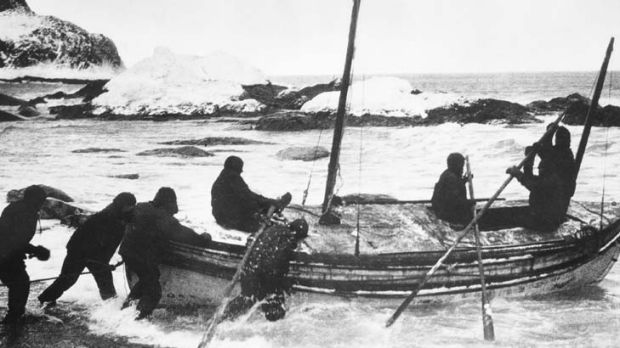
Shackleton and his crew faced indescribable adversity on their journey. Against the stormy frigid seas, the James Caird was in constant peril of capsize. Thanks to the skill of his navigator, the group made it within sight of South Georgia island, but a hurricane prevented their safe landing. With no other choice, they spent a long, freezing night in the lifeboat, just offshore, with gales of wind and waves threatening to dash their party against the rocks.
The following day, the weather improved enough for a safe landing on the south shore. The whaling outpost, however, was on the opposite side of the island. Two options lay before them: they could attempt to round the island by sea, or choose to attempt a dangerous land crossing through glacial ice, mountainous terrain, and blinding snow and wind.

Rather than risk another sea voyage, Shackleton choose to attempt the equally treacherous land crossing. The team had with them only boots with screws pushed into the soles, a carpenter’s adze (a wood-carving tool) and 50 feet of rope. Leaving three men behind with the boat, Shackleton and two companions set out for the grueling 32-mile trek. No one had attempted to cross the island before, and without navigation equipment or landmarks, their chances of finding the whaling station were remote even if they could make it beyond the glacial ice, snow-covered crevices, and impassable ridges.
Of everything Shackleton had faced on his doomed expedition, he would name this last blind trek as the most difficult. Shackleton and his men had lived on ice for over a year by this point. They were cold beyond reason, starving and desperate. They had barely survived the impossible journey in an open life boat to the island, and the 32 miles that lay between their landing and salvation would be considered a an enormously difficult feat even in the best conditions and with appropriate gear. Lacking even mittens (Shackleton gave his away to one of his crew-mates), Shackleton pushed on; the survival of his entire crew resting on his conscience.
It was at this moment, as the threesome pushed through the blinding snow in their most dire circumstance, that the team was joined by a mysterious presence; a ghostly companion that radiated comfort and hope, leading them onward.
Although technically in this case it was a fourth man who joined the men, the term ‘the Third Man’ would come to name the phenomenon after a poem written by T.S. Elliot inspired by Shackleton’s doomed expedition:
“Who is the third who walks always beside you? When I count, there are only you and I together. But when I look ahead up the white road, there is always another one walking beside you.”
The Third Man is properly defined as a sensed presence in times of great physical and mental duress; a benevolent companion that remains for the duration of time that a person is facing extreme crisis and disappears as soon as (or right before) the danger has passed. This companion, which despite the moniker has been described as both male and female, is credited as leading pilots to safe landing sites, encouraging lost hikers onward through blizzards or dense jungle, tending to the ill and comforting the stranded. Unlike reports of guardian angels whose intervention is often quick and mostly unseen, the Third Man endures the same adverse conditions as the experiencer until safety or rescue is obtained.
In his memoir, Shackleton wrote: “During that long and racking march of thirty-six hours over the unnamed mountains and glaciers of South Georgia, it seemed to me often that we were four, not three.”
Shackleton, his two companions, and the mysterious fourth presence marched day and night across the wilds of South Georgia. When the whaling station appeared on the horizon and they heard the glorious sound of a steam whistle, the fourth man simply vanished.
Shackleton initially believed that he alone sensed this guiding presence. Weeks later, however, his navigator Worsley admitted that he had a ‘curious feeling on the march that there was another person with us.” Each of the men who endured that hellish march to rescue had felt the same divine companionship, and yet did not share their experience with the others until much later.
It would take Shackleton three tries, but in the end, he rescued every single one of his men from elephant island, including those left at the landing station at South Georgia. To a man, they all survived. Shackleton remains a hero, not only for his grit and determination but for his courage to face any odds for his crew.
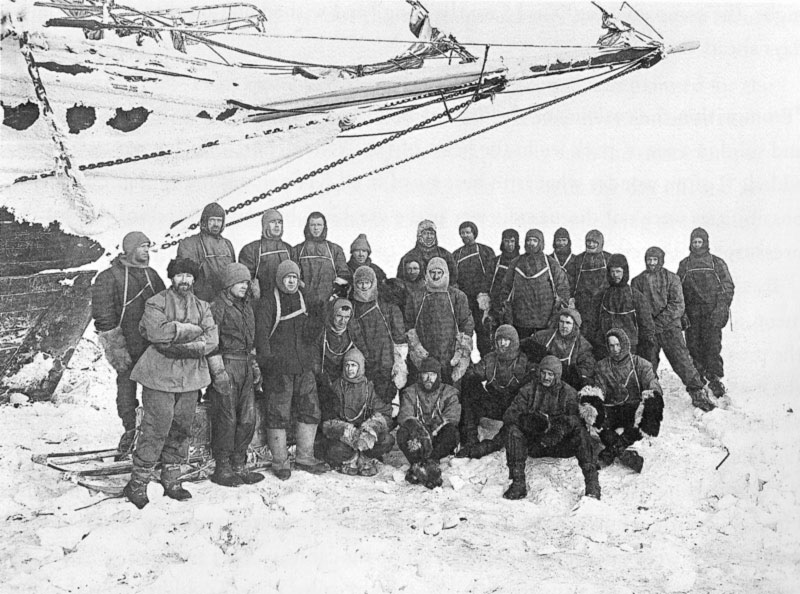
Although reports of the Third Man had been recorded for centuries, the accounts were only recently collected into a single publication when author James Gieger published his 2009 book, The Third Man Factor: Surviving the Impossible. In it, Geiger describes appearances of the Third Man to aid mountain climbers, shipwreck survivors, polar explorers, soldiers at war, pilots, disaster victims. Patricia Pearson also writes about the Third Man extensively in her 2014 book Opening Heaven’s Door: What The Dying are Trying To Say About Where They are Going. Interviews, stories and reports shared by both authors illustrate the many different conditions and challenges which can summon the Third Man.
One famous story involves Henry Stoker (cousin to Bram of Dracula fame) and two British sailors who had an encounter with the Third Man after attempting to escape a Turkish prison during World War I. They moved only at night to evade capture and their provisions consisted only of raisins and cocoa. They were exhausted, hungry and bitterly cold. By the eleventh night, they found themselves facing a particularly difficult, soul-sapping march through a mountain pass.
In the midst of the night, I felt—not suddenly or surprisedly—that we were not three men struggling along in line, but four. There was a fourth man, following at the end of our line, in the correct position for a fourth man to be. When we stopped for a few moments’ rest he did not join us but remained in the darkness, out of sight; yet as soon as we rose and resumed our march he dropped into his place forthwith. He never spoke, nor did he go ahead to lead us; his attitude seemed just that of the true and loyal friend who says: “I cannot help, but when danger is at hand remember always that I am here, to stand—or fall—with you (Geiger p. 60).
Stoker and the other men made it through the mountain and finally reached an area where they could stop, warm up and drink some cocoa. It was only then that Stoker discovered that each of the men had also sensed the presence of a mysterious fourth member of their party.
“We had all three been sensible of his presence throughout the most trying part of the night; we all three agreed that the moment he left us was when we felt we had put the danger behind. I cannot exaggerate how real his presence was, how content one felt – despite the mystery of it – that he should be there (61)“
The Third Man can solid or shadowy, young or old, and male or female, and in rare cases the same presence can appear to people in different physical locations. Both Geiger and Pearson describe the strange case of Ingrid and Lou Whittaker who were separated on a climb of Mount Kanchenjunga in India. Ingrid was suffering from altitude sickness and was recovering in her husband’s tent at base camp when she sensed that she was being cared for by a kindly middle-aged Tibetan woman. Her husband experienced the same ‘friendly spirit’ while leading his own expedition.
“She was wearing a headscarf and a long dress. She was shadowy and two-dimensional, like a silhouette (Pearson p. 87).” Ingrid described her presence as very comforting, though she and her husband would not mention their vision of the woman to each other until months later.
The presence is most often felt or seen rather than heard, although in some cases, the presence will issue instruction. For Ron DiFrancesco, survivor of the terrorist attacks on September 11th, it was the voice of an ‘angel’ that saved his life. When the second plane hit the South Tower, Ron DiFrancesco was stuck on the eighty-fourth floor, above the impact zone. He quickly tried to make his way down a stairwell only to find it filled with people trapped by the flames and smoke. When he discovered that a collapsed wall prevented further descent, he laid down on the concrete with the rest of his colleagues gasping for air and trying to think of a way out. All of the re-entry doors from the stairwell back into the building had malfunctioned, so going up was not an option and a wall of fire and debris blocked any route downward.

Suddenly, Ron described hearing a mysterious voice telling him to ‘Get up!’. It was a male voice, but he couldn’t identify to whom it belonged. He was sure it didn’t belong to anyone trapped in the stairwell with him. The voice told him to continue descending through the wall of fire. He recoiled from the flames and heat, but the voice insisted that he keep going. He made run for it. He was burned by the fire and choked by the thick black smoke as he raced down three flights of the burning stairwell, listening only to the voice who encouraged him on.
“You don’t go toward the fire!” Ron DiFrancesco admitted later, but had he succumbed to fear he wouldn’t have made it out alive. Ron describes taking strength and comfort from that voice which gave him the courage to forge ahead. Once he reached the lower set of stairs he was found by a firefighter who helped to get him to safety. Ron was the last person to make it out of the South Tower alive before its collapse.
James Sevigny was climbing Deltaform mountain in the Canadian Rockies when an avalanche ripped James and his climbing partner off the mountain and drove them 2,000 feet into the valley. With a broken back, arms, nose, ribs and internal bleeding, James couldn’t move to save himself. He found his climbing partner nearby and realized from his twisted form that he had not survived the fall. James crawled near his friend and resigned to die as well. Suddenly a presence appeared. Mentally, he heard the words, “You can’t give up, you have to try.”
As James would later describe to Geiger for The Third Man Factor,“It told me what to do. The only decision I had made at that point in time was to lie down next to Rick and to fall asleep and to accept death. That’s the only decision I made. All decisions made subsequent to that were made by the presence. I was merely taking instructions…. I understood what it wanted me to do. It wanted me to live (Geieger, p. 8).“
Despite his horrific injuries, the voice encouraged, cajoled, even bullied James to walk and crawl the mile through ice-encrusted snow back to camp. The presence disappeared when James Sevigny reached his tent and was subsequently rescued by some cross-country skiers.
Most experiencers remain emphatic that the presence was not an extension of their own minds, but a real entity that offered guidance and comfort. It is not unusual for solo climbers to split their meals into two portions before suddenly realizing their error with astonishment. After a climbing accident in 1978 that left Rob Taylor injured and stranded on a ledge high up the side of Kilimanjaro, he had no choice but to climb into his sleeping bag in his tent and wait for his partner to find rescue. He was losing blood and his broken ankle was succumbing to gangrene. As he huddled in his tent, he saw a figure crouching around a nearby boulder. It didn’t speak, but its outline was clear through the falling snow. Initially, Rob thought it was another climber, but the shadowy person didn’t answer to his calls nor move to help. Day after day, as Rob lay in his tent getting weaker, he figure moved closer. In frustration, he threw rocks at it, demanding to know ‘what it wanted’. Finally, when Rob was close to death, the figure was sitting at the foot of his sleeping bag. Despite Rob’s inability to make out defining features in the darkness, he has always been sure that the presence really existed in the environment.
“It took up absolutely solid space like a stone or anything else (Geiger, P. 179).”
Rob felt like the presence was reassuring and benevolent, ensuring that he was not alone during his ordeal. The presence vanished minutes before Rob Taylor heard his name being called by his rescuers.
I don’t often talk about my companion watcher these days. He is a creature out of place here, misunderstood. After the Breach when I first spoke of him to people, they reacted quite predictably: “What an imagination!” “Your fever had you hallucinating.” At first I persisted in my stand: “He was real. There in the flesh or at least in some concrete form I could see.” Later I left him out altogether. It was easier than trying to define or defend him to people who could not understand. Now I know this and say this to you: He was there and as real as you or I. I do not know to this day his purpose, but I sense that it was good (p. 180).
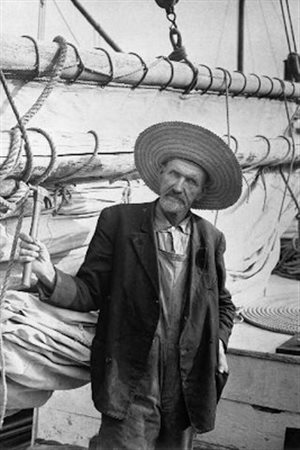
Consider the unusual experience of Joshua Slocum, the first man to sail around the world on a solo voyage. His sloop, The Spray, was heading into stormy waters when Slocum fell ill with severe food poisoning.
I became delirious. When I came to, as I thought, from my swoon, I realized that the sloop was plunging into a heavy sea, and looking out of the companionway, to my amazement I saw a tall man at the helm. His rigid hand, grasping the spokes of the wheel, held them as in a vise (Geiger, 50).
The man was described by Slocum as having an ‘ancient visage’ and felt that he was a “seaman with vast experience”. The man said to Slocum, “I have come to do you no harm…Lie quiet, I will guide your ship to-night (p. 51).”
The next morning, when Slocum had recovered, he found his ship remarkably still on course, despite the storm the night before. More astonishingly, he had traveled 90 miles despite the rough seas, and was in a better position than he should have anticipated. When asked about the experience later by a reporter, Joshua was just as certain as to the reality of the presence:
“If ever there was a man at a ship’s wheel one stood at the wheel of the Spray through that livelong night. No thing could be clearer to me than that (p 51).”
En route to Saigon in 1954, Ensio Tiira and Fred Ericsson of the French Foreign Legion deserted their ship (and posts), throwing a raft and some supplies into the ocean. They were in a busy waterway and expected to be picked up quickly by a another passing ship, but the days stretched on endlessly with no sign of rescue. Tiira and Ericsson floated adrift on the ocean for nearly a month suffering from welts, unbearable thirst, hunger and exhaustion. When Ericsson finally died, Tiira was forced to feed his body to the sharks that had attacked the boat mercilessly day after day. After that, it grew quiet and Tiira, utterly alone in the vast sea, fell into despair. Suddenly, Tiira sensed a presence in the raft with him. In fact, he realized the presence had been with him throughout the arduous journey:
“I didn’t pray, and I’m not a religious man usually, but for the whole voyage I’d had the strange feeling that someone else was with me, watching over me, and keeping me safe from harm. I sensed it in the storm, when we nearly overturned, and many other times. It was as if there were sometimes three people on the raft, not two. With Ericsson dead I felt it more strongly than ever (p. 204).”
On his 34th day upon the raft, Tiira weighed a mere 54 pounds and was close to death. Suddenly, he felt his companion leave which caused Tiira to lose all hope of survival, but it turned out that his rescue was imminent that very day. In many of these cases, the sensed presence disappears before the experiencer him or herself is even aware that rescue is on the way.
In other cases, there is no physical challenge to overcome, but a mental one. In Patricia Pearson’s chapter on the Third Man in Opening Heaven’s Door, she interviews Brian Shoemaker, a pilot who had a third man experience when temporarily disoriented while piloting his helicopter through an Antarctic storm. Although he was in peril certainly, the threat was initially mental rather than physical. Should he fail to reorient himself, he could have certainly been in physical danger but the Third Man intervened. He heard a voice tell him to ‘turn 20 degrees to the right’. Having nothing else to go on, the pilot listened and was shepherded safely out of danger.
Scientists and psychologists do not dispute the reality of the sensed presence, though their explanation for the experience falls into the realm of psychological coping strategies and brain dysfunction. For those lost in the desert or tropical jungle, heat stroke is the likely cause, as is hypothermia for those lost in the bitter cold. Altitude sickness is the preferred choice for mountain climbers encountering the presence, and stress-induced psychosis is tapped for natural disasters and cases where the presence is experienced by those in mental rather than physical danger.
Some psychologists have proposed that the presence is just an evolutionary adaptation to the effects of stress and loneliness, due in part because humans are social animals and crave interaction. The Third Man, they suggested, is the result of a unique combination of extreme stress, monotony and loneliness. As an evolutionary adaptation, the ability to call on a ‘friend’ during long, lonely and dangerous hunting trips during the stone age may have made the difference between survival or starvation. A logical explanation, to be sure, but like most theories about the Third Man, it remains unprovable.
Should the Third Man be considered a coping mechanism, why then wouldn’t experiencers hallucinate groups of people, or images of friends and rescuers rather than a single, unknown but benevolent entity? There are cases where people have identified the Third Man as a religious figure or deceased person (deceased mothers, fathers and grandparents are most common) but reports of Third Man experiences never seem to include a currently living person identified as the presence.
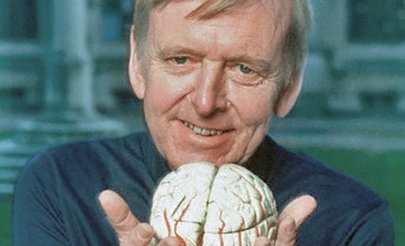
A controversial theory presented by Julian Jaynes in the 1970s presents the Third Man as a reflex toward what he calls ‘The Bicameral Mind’. Jaynes’ theory suggests that consciousness is a late development and that ancient stories of gods and divine visions were the result of a different kind of consciousness – one that was externally projected, rather than internally contemplative. These hallucinations, according to Jaynes, were responsible for visions of gods, angels and demons described by nearly every civilization in antiquity. These projections guided early people and provided an authority for behavior. It was only later that our consciousness unified into the internal sense of self that we recognize now. Sensed presences experienced in modern times, as explained by Jaynes, is a throwback to this bicameral consciousness in times of great mental and physical stress whereby an external presence is needed to guide the person out of danger. We are hallucinating, according to Jaynes, and projecting an external source of authority and comfort when our situation is dire enough to warrant it. Other modern examples according to this theory are the imaginary playmates of children, and the external voices heard by schizophrenics. Jaynes laid out his controversial theory in his popular science book The Origin of Consciousness and the Breakdown of the Bicameral Mind published in 1976.
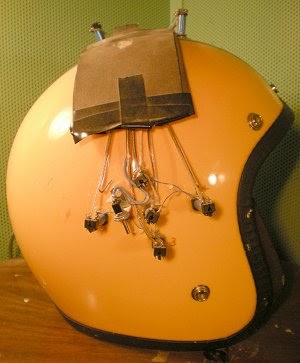
Michael Persinger of Laurentian University in Ontario, Canada is engaged in research in the field of neurotheology (brain-based explanation for religious or spiritual experiences) and believes that sensed presences during times of great duress are the result of magnetic fields interrupting certain brain functions. He has tested his theory by creating the so-called ‘God Helmet’. In the laboratory, he subjected participants to weak magnetic forces which reportedly can bring on a sense of being watched, or the feeling of another person in the room (sometimes identified in religious terms) in about 80% of cases. Outside of the lab, sources of these magnetic fields may be solar winds, seismic activity or electrical equipment. How the sensation produced by the God Helmet relates to the benevolence of the Third Man is debatable. Perhaps the reason is because the Third Man only appears in unique situations that combine real danger, isolation and monotony which cannot be reproduced in a laboratory environment. Furthermore, there is no evidence yet that links natural sources of magnetism to these ‘hallucinations’, even with the combined effect of stress and isolation. Nonetheless, Persinger has suggested that this temporal-lobe stimulation may be responsible for all religious, spiritual and paranormal experiences that have been recorded throughout time, including reports of the Third Man. Should you wish to try the “God Helmet” out for yourself, they are available for purchase.
Another possible neurological explanation for the Third Man factor was stumbled upon by Swiss scientists who were probing an epileptic patient’s brain with electrical stimulation to determine how best to treat the affliction. They discovered that something akin to the Third Man presence could be induced by stimulating an area of the brain called the temporo-parietal junction which is responsible for identifying our body position in space. The patient described the unknown presence as a sort of shadowy body-double, who mirrored her actions. Other case studies of people with damage to that specific part of the brain sometimes reported a similar feeling of sensing people around them that didn’t exist. While it is an interesting development, this effect has only been recorded in a handful of case studies and there are no indications that a variety of external pressures are more likely damage or effect the temporo-praietal junction.
People who report the Third Man presence do not otherwise describe hallucinations; they don’t begin to see nonsensical images around them, and they have not demonstrated temporary insanity while seeing the Third Man. In fact, those who sense the presence are typically very alert to their surroundings, physical condition, and chances for survival, despite their physical or mental challenges. There are reports of people in extreme situations who do hallucinate, usually to their death or physical detriment, but such examples do not include the Third Man.
Studies of patients with neurological damage, epilepsy and the experimentation with brain stimulation and magnetic waves do not adequately explain the Third Man phenomenon although some participation from the brain has not been ruled out. In order to argue that damage to the brain in situations of physical extremity is the sole cause of Third Man experiences, however, one would have to explain how the range of experiences – some that are not necessarily physical in nature – can result in the same symptom. After all, mountain climbers and shipwreck victims find themselves faced by very different physical environments and challenges for survival, and yet both describe a very similar presence in thier time of dire need.
Is the Third Man presence a psychological adaptation to stress? It is the effect of extremity on the brain? Could it possibly be the guidance of a divine guardian? Perhaps the Third Man presence is a combination of these factors. Although the current divide between materialism and spiritualism has followers of each taking sides for and against the brain’s participation in these events, there is no reason that a spiritual experience may not have a physical or neurological component, just as a neurological experience may indeed conjoin with a spiritual one. I suspect that many legitimate spiritual experiences have some participation from the brain, which many proponents of dualism believe is our soul’s interface with the physical world. A spiritualist might even suggest that in extreme situations, we develop the temporary means to communicate with the spiritual world. Perhaps in contrast to stories of negative spirits who set out to destroy the lives of mankind, an equally motivated collection of benevolent beings are called to assist in times of great need.
A great many scientists, spiritualists and psychologists have all attempted to explain the Third Man phenomenon but ultimately the answer eludes us. For those who have been touched by the Third Man, any attempt to reduce their experience feels like sacrilege. The source of the experience notwithstanding, each has come away with a reverence for the experience that resists explaining it away as some brain aberration or coping strategy. When the Third Man has come to comfort, guide, and intervene in cases of stress and extreme challenge, the experiencer is simply grateful for the presence. Afterward it makes no difference as to the origin. It is enough that in their most harrowing hour, they were never alone.
Sources:
Geiger, John. The Third Man Factor: Surviving the Impossible. Weinstein Books.
Pearson, Patricia. Opening Heaven’s Door: What the Dying Are Trying to Say About Where They’re Going. Atria Books.
Also see:
Geiger, John. The Angel Effect: The Powerful Force That Ensures We Are Never Alone. Hachette Books.
What do you think is the cause of the Third Man presence? Do you feel that it is physical, mental or spiritual in nature, or a combination of factors? Let’s discuss!
Have you or someone you know experienced angelic intervention or the Third Man presence? I’d love to hear about it.


Perhaps it IS a guardian angel? A ‘quick rescue’ may not, in such cases, be what is intended to be effected. Perhaps the persons involved are meant to endure the hardship, yet ultimately survive, with the guardian’s assistance.
I personally have been saved from death or serious physical injury, not by seeing or sensing the presence of a spirit, but by hearing and heeding a spirit’s voice.
LikeLiked by 1 person
That is very true, it all comes down to semantics really. I like the idea that maybe they are spirits who help out in their area of expertise. That’s incredible that you had one of these experiences too. I can imagine that it is a profound and sacred thing to have had a spiritual intervention.
LikeLiked by 1 person
Wonderful reading, thank you for taking the time to put together.
LikeLiked by 1 person
Thank you! 😊 I’m really glad you enjoyed it. I highly recommend John Geiger’s book, all the experiences were fascinating.
LikeLike
very interesting article, well done. This reminds me of the teachings of many modern spiritual non-duality teachers. We are one consciousness, one with everything in the universe which was brought about by this one consciousness.
When, through training,meditation or danger, mundane everyday thoughts are banished from the mind, this consciousness can be felt as awareness (I am aware that I am aware) it becomes untangled from the mind and realizes its true potentiality and reality, never born and never dying,bliss and peace, eternal presence, with all knowledge, the true and only doer in our lives.
Consciousness doesn’t need a mind to know itself but needs a mind to know its own creation, it is infinite without form or content, and pervades all things (which are no-things), it is of itself,by itself,made of itself and knows itself, Some call it God, others universal consciousness, it doesn’t matter which, it is the silent non judgmental watcher.
LikeLiked by 1 person
Thanks for this fascinating piece. I wonder if these experiences are of the presence of the “oversoul” as described in the Seth books. I noticed in your magical December piece that you encountered Seth early in your search.
LikeLike
Dear Dander,
You raise an interesting point – if I recall (and I haven’t read the oversoul books for some time now), Oversoul 7 did help out in little ways when her undersouls (?? for lack of a better word) were in trouble. I’ll have to pick up the trilogy again soon and see if that is in fact the case. Thank you for raising such an interesting possibility for the third man phenomenon!
Jenn
LikeLike
Magnetism. That word/concept/thing stood out in my mind while I read this post.
And I loved this: “Although the current divide between materialism and spiritualism has followers of each taking sides for and against the brain’s participation in these events, there is no reason that a spiritual experience may not have a physical or neurological component, just as a neurological experience may indeed conjoin with a spiritual one. I suspect that many legitimate spiritual experiences have some participation from the brain, which many proponents of dualism believe is our soul’s interface with the physical world.”
Thank you, Jenn, for giving your readers a fascinating topic to contemplate.
LikeLike
Thank you! I’d actually like to plan a whole post on that topic – I think it will be interesting to explore the role of the brain in spiritual experiences. Although the entire rest of the post is dedicated to the either/or question – I believe its not really that simple and I appreciate that you picked up on that as well.
Jenn
LikeLike
[…] via The Mystery of The Third Man — The Search For Life After Death […]
LikeLike
[…] Readers, this is a long but comprehensive and fascinating article. It contains several accounts of Third Man phenomena and discussion of that. Briefly, it’s the figure of someone who shows up when things are scary and grim, and offers hope, light and help. Take a few minutes to look at this essay. From The Search For Life After Death blog, here: The Third Man […]
LikeLike
[…] became interested in the phenomenon after reading a very well-written blog post by Jenn on The Mystery of the Third Man where she referenced the book by John Geiger. In both the book and blog post, the Shackleton […]
LikeLike